If you want to create a successful blog or vlog, or you are wondering about “blog vs vlog”, then you are in the right place.
YouTube is definitely saturated; 500 hours of video are added every minute. Hundreds of million-dollar YouTubers and bloggers produce thousands of hours of video each year.
Bloggers can make an average of $50,000 per year and even better with $200,000 per year work about 10-30 hours per week, according to Glassdoor reports.
Of course, you can not earn that number overnight, but the information in this article will definitely be a springboard to help you jump to success sooner.
Standing in the middle of many blog or vlog choices can be confusing and disorienting. And making a blog or a vlog or even both, you will need to invest time, energy, money, and possibly more.
Don't worry, we got you covered. This article will tell you:
blog definition and example
vlogging definition
blogging vs vlogging income
blog vs vlog format
blogging and vlogging difference
Let's dive in and pick the perfect choice for you.
Statistics Data: Blog vs Vlog
Here are some blog vs vlog statistics for you to understand how these two have been performing in the world recently.
Market Size - Blogging vs Vlogging
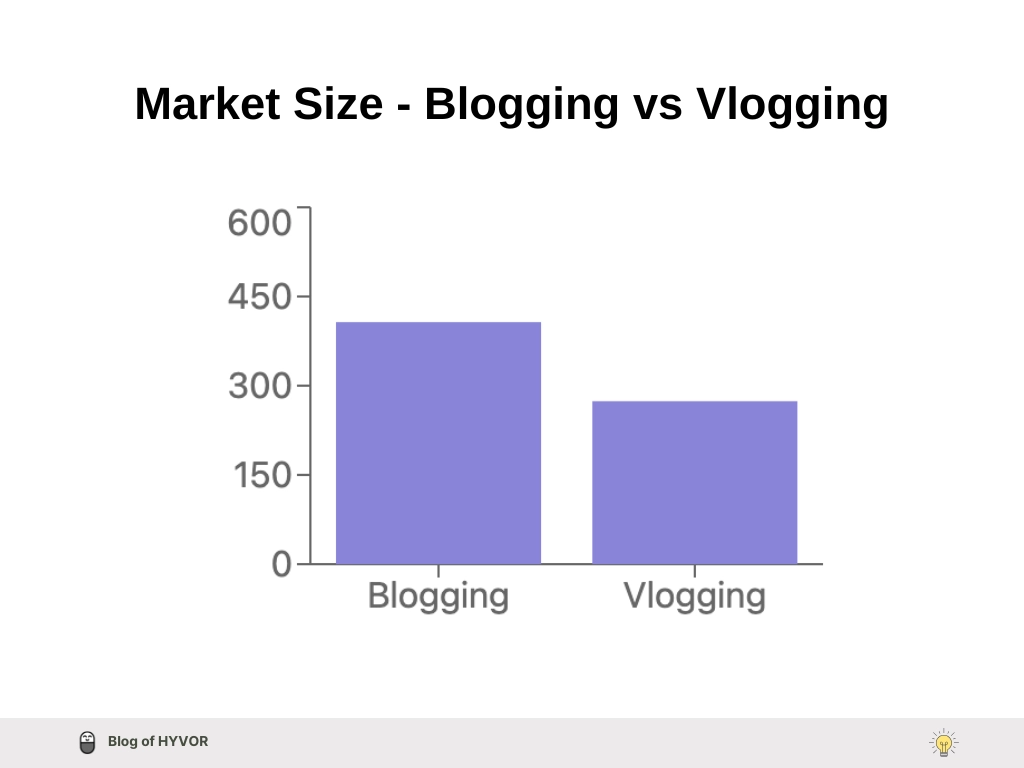
Blogging dominates with a market size of $407 billion, reflecting its longstanding popularity and accessibility as a content creation platform. Meanwhile, vlogging has a sizable market of $274 billion, driven by the growing demand for video content across platforms like YouTube and TikTok. The data underscores the significant economic footprint of both mediums, with blogging maintaining a slight edge in overall market size.
Annual Growth Rate % - Blog vs Vlog

Vlogging exhibits a rapid growth rate of 24%, surpassing blogging's growth rate of 15%. This disparity reflects the increasing consumer preference for engaging and visual storytelling formats, which are particularly effective on social media platforms. Blogging, while growing at a steadier pace, continues to expand due to its strong role in search engine optimization and long-form content marketing. This data emphasizes how both industries are thriving but vlogging is experiencing faster momentum in the current digital landscape.
Annual Income - Blogging vs YouTubing

Vlogging exhibits a rapid growth rate of 24%, surpassing blogging's growth rate of 15%. This disparity reflects the increasing consumer preference for engaging and visual storytelling formats, which are particularly effective on social media platforms. Blogging, while growing at a steadier pace, continues to expand due to its strong role in search engine optimization and long-form content marketing. The chart emphasizes how both industries are thriving but vlogging is experiencing faster momentum in the current digital landscape.
With these statistics and data, I hope you now have an idea of how blogging and vlogging performed in the year 2024.
Now, let’s see what is blog and what is vlog in detail.
What is a Blog?
The term "blog" first appeared in 1999, marking the start of this whole blogging adventure.
The word "blog" is actually a mashup of "web" and "log," which makes sense when you think about it.
Back in the day, articles vs blogs started out as online diaries where people would share their daily lives on the web.
But now, they've become super important for both individuals and businesses to share information and updates with the world.
Some folks even make a living from blogging full-time or affiliate blogs.
So, what's unique about a blog vs a website?
Well, blogs have this cool way of standing out from the crowd. Instead of being just another normal website, days of our lives bloggers are dedicated individuals who share their thoughts, ideas, and creations.
It's like a virtual window into someone's world that's always changing and keeping you engaged.
Some Types of Blogs:
Niche Blog
Affiliate Blogs
What is a Vlog?
A vlog, or video blog, is like having your own show where you express yourself through videos.
If it's a blog, you can read information, a Vlog is something that you can see and listen to. It could be anything from reporting on an event to reviewing a product.
Vlogs may also be a great way to share your artistic process or provide tutorial guides on creative practices or topics.
You can vlog about almost anything you're passionate about like Blog!
Vlogs have been around since January 2nd, 2000. Adam Kontras posted his first video on his personal blog, sharing his journey to Los Angeles with friends and family.
That was the beginning of vlogging as we know it today!
What makes vlogs unique is the first-person storytelling style.
The person behind the camera is often the narrator, which adds a personal touch to the videos.
Even before the internet made it easy to share videos, people were shooting handheld, first-person footage.
The term "vlog" is also used by video streamers or YouTubers who schedule updates and share videos through platforms like YouTube.
They're often referred to as vloggers.
You can even do live broadcasts from social media channels like Facebook and Instagram.
Vlogs are a great way to connect with potential customers from around the world.
However, with the fierce competition in today's digital world, Vlogs aren't just that simple.
It can be seen that blog vs vlog vs podcast has many differences, but they still have the same big goal of engaging the audience with quality blog content and scripts of content.
In order to create the perfect vlog that captures your audience, you need to transition well from shooting equipment to a good script. Finally, edit eye-catching vlogs before uploading.
Blog vs Vlog Format
Blog Format
When it comes to blogging, there's a wide range of formats to choose from depending on your goals.
It's important to recognize that there isn't just one type of blog post you can create, and some formats are more suitable for certain ideas than others.
Another crucial factor to consider is the angle you take on a topic, which can greatly impact the format you choose. Let's explore some popular blog formats:
The How-To Post
The Listicle
The 'What' Post
The 'Why' Post
The FAQ Post
The Interview Post
Example of How-to Post format:
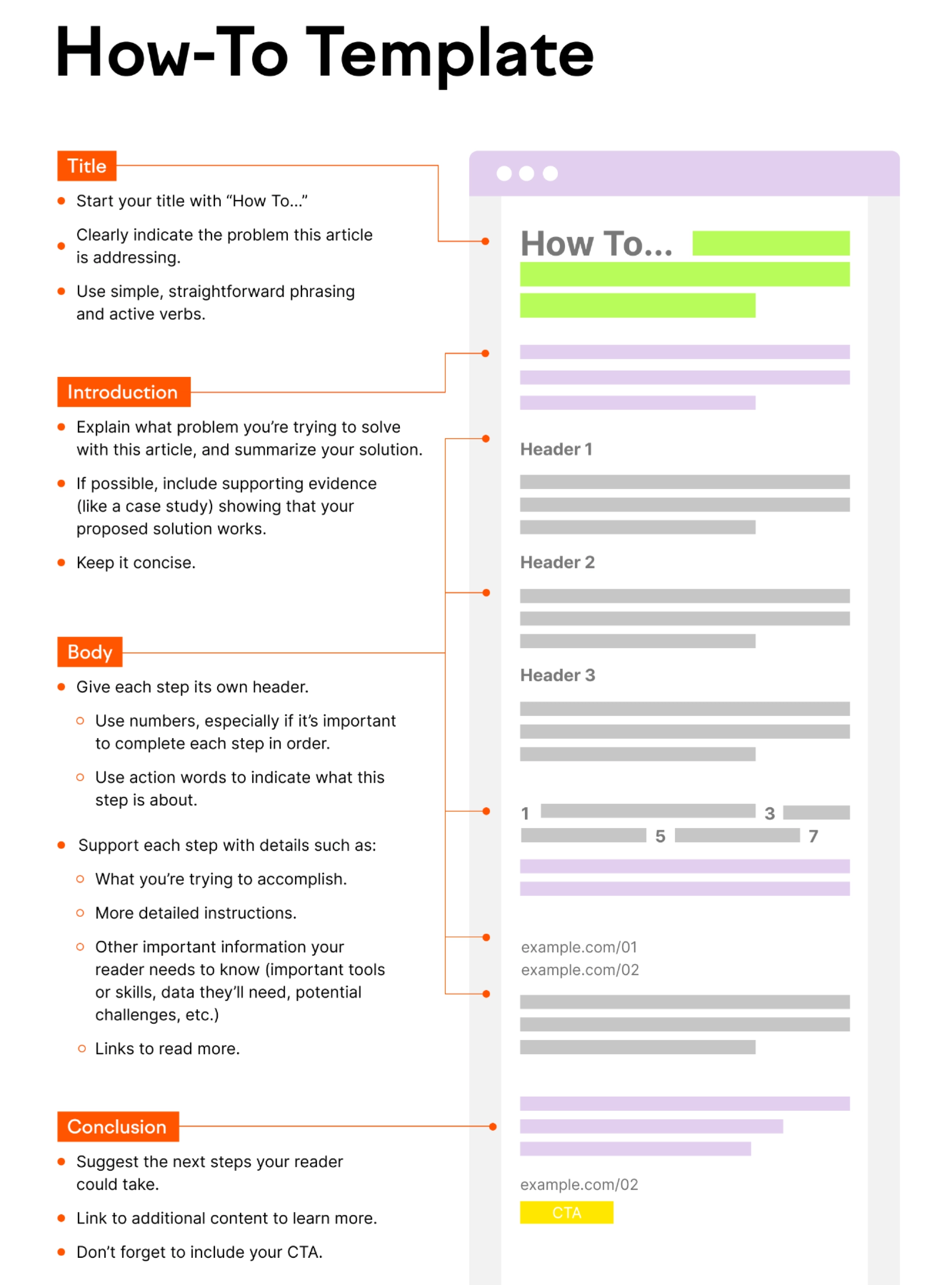
Vlog Format
Vlog formats refer to the different styles and structures that vloggers use to present their video content. These formats provide a framework for vloggers to engage their audience and deliver their message effectively.
Some common vlog formats:
Day-in-the-Life
Tutorial/How-To
Product Reviews
Travel Vlogs
Challenge or Tag
Storytime
Q&A Sessions
Collaborations
Vlogs with a Cause
Before you grab your camera and start vlogging, one of the most vital steps is to develop a vlog script.
A script helps you plan the flow of your video, ensuring you cover all the necessary points and maintain a cohesive narrative.
It keeps you organized, minimizes mistakes or pauses, and allows you to deliver your content effectively.
Example of vlog script:
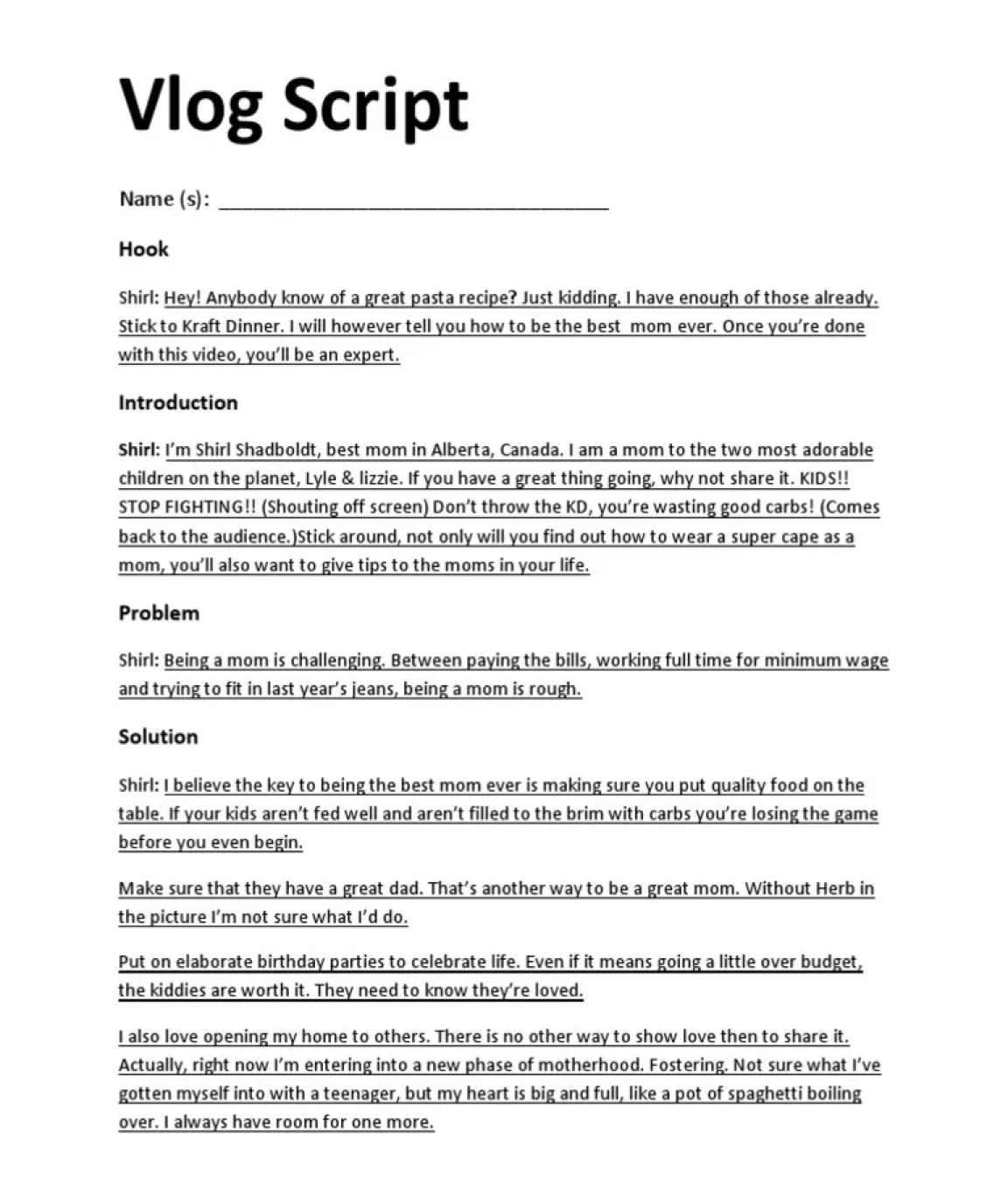
Source: Vlr.eng.br
The difference: blogging vs vlogging
Blogs and vlogs have taken the digital world by storm, offering distinctive ways to connect and share content. But what sets them apart?
Take a look at this insightful table that compares their medium of communication, production process, audience engagement, accessibility, personal branding, earning potential, monetization, time investment, and overall investment.
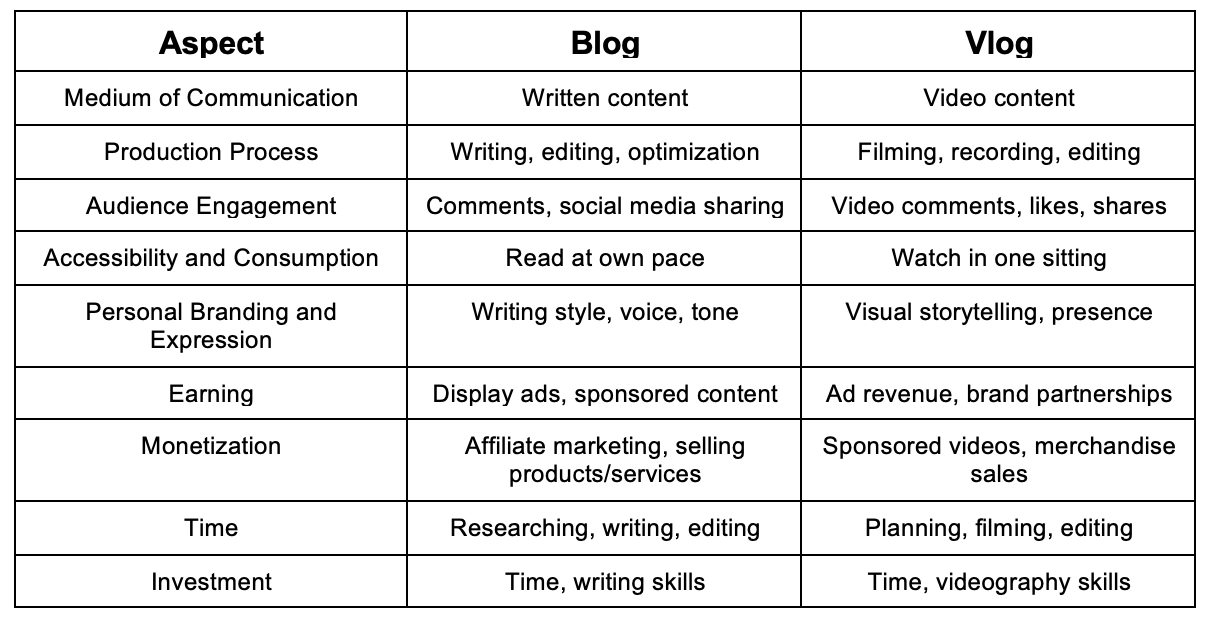
1. Medium of Communication
Blogs:
Bloggers express their thoughts, ideas, and expertise through written articles and posts.
Written communication allows for detailed explanations, analysis, and a unique writing style.
Bloggers often use images, infographics, or embedded videos to enhance written content.
Vlogs:
Vloggers engage their audience visually and audibly through video content.
They utilize their presence, body language, and voice to connect with viewers.
Vlogs offer a dynamic and immersive experience, showcasing the vlogger's personality and creativity.
2. Production Process
Blogs:
The production process for blogs involves writing, editing, and optimizing the written content.
Bloggers research their topics, outline their ideas, and craft engaging articles or posts.
They often revise and edit their work to ensure clarity, coherence, and a polished final product.
The production process also includes optimizing the blog post for search engines by incorporating relevant keywords and meta tags.
Vlogs:
Vlogs require a different production process that revolves around filming, recording, and editing videos.
Vloggers plan their content, set up the camera and lighting, and begin filming their videos.
They may use additional equipment such as microphones or tripods to enhance the video quality.
After recording, vloggers edit their videos to trim footage, add transitions, incorporate music or sound effects, and create a cohesive and engaging final product.
3. Audience Engagement
Blogs:
Audience engagement in blogs primarily happens through comments and social media sharing.
Readers have the opportunity to leave comments on blog posts, share their thoughts, and engage in discussions.
Bloggers can respond to comments, create a dialogue with their audience, and build a sense of community.
Social media platforms play a crucial role in promoting blog content and encouraging audience interaction.
Readers can share blog posts on their social media accounts, allowing others to discover and engage with the content.
Vlogs:
Audience engagement in vlogs occurs through various means, including video comments, likes, and shares.
Viewers can leave comments directly on the video, expressing their thoughts, feedback, and questions.
Vloggers often interact with their audience by responding to comments and fostering conversations.
Viewers can show their appreciation by liking or sharing the video, spreading it to a wider audience.
Vlogs have a more immediate and interactive nature, as viewers can directly connect with the vlogger and other viewers through the comment section.
4. Accessibility and Consumption
Blogs:
Blogs offer a high level of accessibility as readers can access the content at their own pace.
Blog posts are typically written in a format that allows readers to skim, scan, or delve deeper into the content.
Readers have the flexibility to consume blog posts on various devices, including computers, tablets, and smartphones.
Blog content is often organized into categories, tags, or archives, making it easy for readers to navigate and find specific information.
Readers can bookmark or save blog posts for future reference, enabling them to revisit the content whenever they need it.
Vlogs:
Vlogs provide a different consumption experience, as viewers typically watch the videos in one sitting.
Viewers engage with the vlog by dedicating their attention to the video and following the vlogger's narrative or story.
Vlogs are primarily consumed on video-sharing platforms for vlogger's websites, utilizing video players for playback.
Viewers can access vlogs on various devices, such as computers, smartphones, or smart TVs, enhancing the convenience of consumption.
Subscribers or followers receive notifications or updates when new blogs are published, ensuring they stay up-to-date with the latest content.
5. Personal Branding and Expression
Blogs:
Blogs provide a platform for personal branding and self-expression through writing style, voice, and tone.
By establishing a unique brand identity, bloggers can attract an audience and build a loyal following.
As their personal brand grows, bloggers can explore various monetization avenues, such as sponsored content and display ads.
Collaborating with brands allows bloggers to promote products or services in their niche, generating income through partnerships.
Bloggers can also create and sell their own products, leveraging their expertise and audience trust to generate revenue.
Vlogs:
Vlogs offer an engaging medium for personal branding and self-expression through visual storytelling and on-camera presence.
Vloggers can cultivate a distinct brand identity that resonates with their audience, building a dedicated fan base.
As their personal brand gains traction, vloggers can explore earning opportunities like ad revenue and brand partnerships.
Video-sharing platforms enable vloggers to monetize their content through ads, generating income based on views and engagement.
Vloggers can also collaborate with brands, featuring products or services in their videos and earning compensation.
6. Earning
Both blogging and vlogging have the potential to generate income, it’s quite similar to blog vs website for making money.
But average blog income and average vlog income are the same?
No, the amount you can make varies based on factors like audience size, engagement, and monetization strategies.
While some bloggers and vloggers can earn substantial incomes, it takes time, effort, and dedication to achieve such success. The average YouTuber makes around $52,800 per year, while the reported average blogger's salary is approximately $38,400. These figures vary based on individual circumstances and strategies employed.
7. Monetization
Here is the way you can earn money from blog vs vlog:
Blogs
Affiliate Marketing: Earn commissions by recommending products or services through affiliate programs.
Sponsored Posts: Collaborate with brands to create sponsored content for compensation.
AdSense: Monetize your blog by displaying ads through platforms like Google AdSense.
Banners: Sell ad space on your blog to advertisers.
Email Marketing: Utilize email marketing to promote products, affiliate links, or exclusive content.
Vlogs:
Ad Revenue: Earn a share of ad revenue by monetizing your videos on platforms like YouTube.
Sponsored Content: Collaborate with brands for product placements or sponsored videos.
Google AdSense: Monetize your YouTube channel by allowing Google to display ads on your videos.
Merchandise Sales: Create and sell branded merchandise related to your blog's content.
8. Time
The average time required to create a blog post or vlog can vary based on factors such as content length, complexity, research involved, production quality, and individual experience. While it's challenging to provide an exact average due to the wide range of possibilities, we can offer some general insights:
Blog:
Writing a blog post: On average, it can take between 2 to 6 hours to write a standard-length blog post (around 1,000 to 2,000 words) depending on the writer's speed and familiarity with the topic.
Editing and proofreading: This step may take an additional 1 to 2 hours to refine the content, ensure proper grammar and clarity, and improve the overall quality of the post.
Formatting and optimization: Allocating about 1 hour to format the post, add relevant images or multimedia, optimize it for search engines, and make it visually appealing.
Publishing and promotion: Uploading the blog post, scheduling it for publication, and promoting it through social media typically takes around 30 minutes to an hour.
Vlog:
Planning and conceptualization: Depending on the complexity and length of the video, planning and brainstorming ideas for a vlog can take between 1 to 3 hours.
Filming: The time required for filming a vlog can range from 1 to 4 hours, considering factors such as video length, number of takes, additional shots, and B-roll footage.
Editing: On average, editing a vlog may take between 3 to 6 hours, depending on the complexity of the video, the desired level of polish, and the vlogger's familiarity with the editing process.
Uploading and promotion: Uploading the video, adding titles, descriptions, tags, and thumbnails, and promoting it through social media typically takes around 30 minutes to an hour.
Note: these are rough estimates, and the actual time required can vary significantly based on individual circumstances, content complexity, and personal workflow. Some bloggers and vloggers may take less time, while others may spend more, depending on their expertise and production standards. Efficient time management, organization, and experience can help reduce the overall creation time for both blogs and vlogs.
9. Investment
Investments for Creating a Blog:
Equipment:
Computer or Laptop: Investing in a reliable computer or laptop is essential for writing and managing your blog effectively.
Internet Connection: A stable and high-speed internet connection is necessary for research, content uploading, and interacting with your audience.
Website Development:
Domain Name: Registering a unique and memorable domain name for your blog. Read how to customize your domain here.
Hosting: Invest in a reliable hosting service to ensure your blog is accessible to visitors at all times.
Website Design: Build a catchy theme with some simple clicks or hire a web designer to create a visually appealing and user-friendly layout for your blog.
Software and Tools:
Blogging Platform: Using a blogging platform like Hyvor Blogs for easy content creation, organization, and management.
Writing and Editing Tools: Check grammar and spelling to make your blog clear and smooth. Grammarly is a perfect choice.
Marketing and Promotion:
Social Media Advertising: Allocating a budget for promoting your blog on social media platforms to reach a wider audience.
SEO Tools: Using SEO tools to optimize your blog for search engines and increase organic traffic.
Investments in Creating a Vlog:
Equipment:
Camera: Cameras on your smartphone have improved dramatically over the years. You've surely already taken some fantastic photos and movies with your phone.
Microphone: You can either obtain a camera with a mic-in jack so you can plug in an external microphone (as you can when recording with your smartphone), or you can buy a USB microphone and record the sound directly to your computer.
Tripod or Gimbal: Invest in a stable tripod or gimbal for smooth and steady shots.
Video Editing:
Video Editing Software: Video editing software is a good way to enhance the quality of your vlogs. Such as iMovie comes on all Macs and is available as an app on iOS.
Graphic Design Software: If needed, invest in graphic design software to create visually appealing thumbnails or graphics.
Marketing and Promotion:
Social Media Advertising: Allocating a budget for promoting your vlogs on social media platforms to reach a larger audience.
Collaboration and Networking: Investing time and effort in building relationships with other vloggers and creators to collaborate and cross-promote each other's content.
Best platform for vlogging:
Blogging vs Vlogging: Which Should You Choose?
Now that you know how blogs and vlogs are different, it's time to start finding out which one is the perfect fit for you.
Of course, it will depend on your goals, your budget, your time, and the speed you want to grow your online presence.
Let's explore this a bit further.
Could say that vlogging is currently the fastest-growing medium, and you can use it to grow quickly.
The visual nature of vlogs allows for a more direct and personal connection with your audience, and the potential for viral content can skyrocket your visibility in no time.
However, you need to invest a large amount of money in equipment, such as cameras, microphones, and editing software.
On the other hand, blogging offers its own set of advantages.
When you own your own website, your blog becomes an asset that can increase in value over time.
It allows you to create a comprehensive platform where your audience can engage with your content and easily navigate through your archives.
Starting a blog does involve some costs, such as domain registration and hosting fees, but with the right strategies, it can become a profitable venture.
Now, let's get down to business. Ask yourself a few essential questions when deciding between a blog and a vlog:
Do you feel comfortable in front of the camera?
What are your long-term goals for your online presence?
How much time and effort can you realistically dedicate to content creation?
Are you more comfortable with writing in-depth articles or seemingly captivating videos?
Are you prepared to invest in the necessary equipment, software, and resources to create high-quality content for your chosen medium?
If you find yourself leaning towards blogging, check out Hyvor Blogs, the best all-in-one blogging platform in 2025.
Some of the main features of Hyvor Blogs:
Multi-language support by default - You can add new languages to your blog as you prefer. You can start multi-language blogging using different languages and grow your audience. It is just a piece of cake. Whether you choose to do blogging or vlogging, a multi-language supported platform can help you immensely in reaching a bigger audience.
Right-to-left (RTL) languages supported - Arabic, Persian/Farsi, Hebrew, and more
Auto translation - No tedious tasks of translating blog posts into different languages. With just one click, you can translate your blog posts easily.
Custom domains - You can easily set up to host your blog on a custom domain
yourdomain.comorblog.yourcomany.com. Once you register your blog with a domain registrar, you can connect it to Hyvor Blogs. SSL certificates will be handled automatically.Fast and secure blogging - Hyvor Blogs is optimized for blazing blazing-fast blogging experience: static, cached HTML pages, no Javascript bloat, automatic WebP conversion, responsive images, and, flashload for faster navigation. You do not have to worry about the security of the blog.
Powerful rich text editor - Hyvor Blogs’s carefully crafted rich text editor makes writing blog posts effortless. Add headings, blockquotes, images, embeds, code blocks, and more.
Markdown-friendly - Markdown shortcuts for all the formatting you need.
Customizable Themes - Raydo, Pela, Zing, Torn and more. All of these themes are editable and completely free for anyone using Hyvor Blogs. You can make your own theme for your blog if default themes do not satisfy you.
Free commenting system - Hyvor Talk is completely FREE in Hyvor Blogs. So you can have a comment space on your blog at no cost. A blog without a commenting space is dull.
GPT (AI) for content creation - Chat with GPT to generate content, blog post outlines, and more. GPT is integrated directly into the editor, making it easy to use generated content in your posts.
Broken link analyzer - Hyvor Blogs’s link analyzer checks for broken links in your posts as you write. It also runs a bi-weekly check on all your posts and notifies you via email if any links are broken.
Mobile friendly - You can blog from anywhere using any device. Even using your mobile.
Google Fonts, locally
Privacy protected
Complete control - HB does not inject ads, trackers, affiliate links, or paywalls into your blog. It's your blog - You decide everything!
Data Ownership - You own the content you write. You can export your content and move to another platform anytime.
In-built SEO - All you need for technical SEO is in-built in HB
Easy to set up with essential tools such as Google Analytics, Google Adsense,
Sub-directory hosting - Host your blog at /blog of your web app: Cloudflare workers, Next.js, Laravel, Symfony
Excalidraw Integration - The famous drawing tool, Excalidraw, is now embedded within the image uploader to help you quickly draft a sketch as you write.
Team collaboration - Bring your whole team to write. Hyvor Blogs has blog roles so you can manage roles in your team to manage content creation.
Easy integration with useful tools - You can easily integrate useful tools like Google Adsense, Google Analytics, Typeform, Convertkit, Memberstack, Mailchimp, Google Forms, Microsoft Forms, Wufoo Forms, Shopify, and more.
Headless CMS for blogging - If you are planning to design your own blog using headless CMS, Hyvor Blogs provides you all the necessary features for that such as Data API with easy content management. You can use any frontend framework/technology (Astro, Next.js, Svelte/Sveltekit, Nuxt, and more) to design your headless blog without worrying about content management.
Plus, Hyvor Blogs is completely developer-friendly.
Data API - Access public data of your blog as JSON using our Data API. For example, you can use it to get the latest posts on your blog. The Data API makes Hyvor Blogs work as a headless CMS for an alternative front-end.
Delivery API - Delivery API allows you to host your blog within a subdirectory of your web applications, with the help of Webhooks.
Console API - This is the same API we use in the Console. Automate some of your administrative tasks, or you can even build your own console.
Webhooks - Ping a URL when something happens on your blog (ex: when a post is created).
Not only that but also HB supports web framework integrations such as Symfony, Laravel, Next.js, Cloudflare Workers, etc.
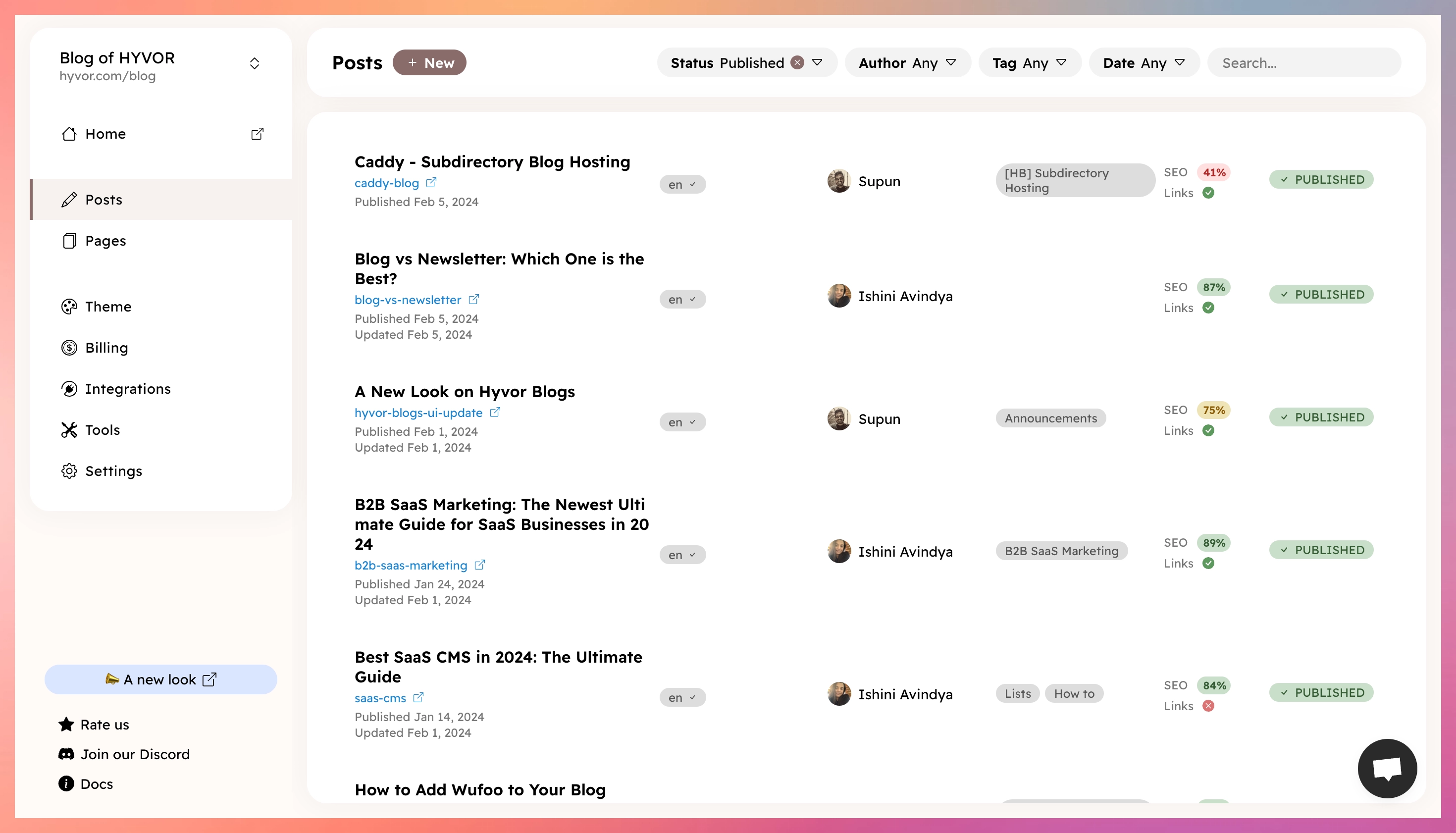
Pricing for Hyvor Blogs starts at just $9/month. You can see up-to-date pricing information here.
In fact, I am writing this very blog post on the Hyvor Blogs Console, which makes writing and editing super easy!
Isn’t Hyvor Blogs a great app for blogging? It is also known as one of the best WordPress alternatives.
Remember, when it comes to choosing between blogging and vlogging, there's no one-size-fits-all answer. It's all about finding the path that aligns with your passions, goals, and resources. Take the time to evaluate your options, weigh the pros and cons, and most importantly, enjoy the creative journey ahead.
FAQs
Blog vs Vlog: which of the two best defines your character?
This is a personal preference and depends on your communication style and creative expression. Imagine you resonate more with writing and in-depth exploration (blogging) or visual storytelling and direct engagement (vlogging).
How much does the average blogger make?
The average blogger's income varies widely based on factors such as niche, audience size, monetization strategies, and level of dedication. Reports suggest an average blogger salary of around $38,400 per year.
How to become a blogger on YouTube?
Start by creating a YouTube channel. Decide on your niche, create valuable content, optimize your videos for search engines, engage with your audience, and consistently upload new videos.
How to become a vlogger and make money?
Begin by identifying your niche and target audience. Invest in quality equipment, create compelling and engaging videos, optimize them for discoverability, collaborate with brands, and explore monetization options such as ad revenue, sponsored content, or merchandise sales.
How to become a YouTube blogger and make money?
Here are simple steps you can follow: create a YouTube channel, focus on a specific niche, consistently upload high-quality content, build a loyal audience, optimize your videos for search visibility, explore monetization options like ads, sponsorships, and merchandise, and actively engage with your viewers.
How to start a vlog and make money?
Identify your vlogging niche, invest in essential equipment, create captivating and valuable videos, optimize them for search engines, engage with your audience, explore monetization options such as ads, sponsorships, and merchandise sales, and consistently deliver high-quality content.
How to start a vlog channel?
Determine your content focus, choose a name for your channel, create a YouTube account, plan your videos, film and edit them using quality equipment and software, upload your videos to your channel, and promote them through social media and other channels.
How to start a vlog YouTube channel?
Planning your content and niche, investing in good camera equipment and video editing software, filming and editing your videos, uploading them to your channel, optimizing them for search visibility, and promoting your channel to attract subscribers and viewers.
How to start vlogging on YouTube?
Create a YouTube channel, define your vlogging niche or topic, plan and film your vlogs, edit your videos, and upload them to your YouTube channel for your audience to enjoy.
How to start vlogging on YouTube for money?
Follow the same steps as starting vlogging on YouTube, but also focus on monetization strategies such as enabling ads on your videos, partnering with brands for sponsored content, or promoting products and services relevant to your audience.
Conclusion
Choosing between blogging and vlogging in 2025 comes down to your personal preferences and communication style. If you enjoy writing and providing in-depth insights, blogging may be the right fit. For those who thrive in front of the camera and prefer visual storytelling, vlogging is a great option. Consider your strengths, target audience, and passion to make the best decision. Embrace the journey, stay consistent, and enjoy the rewarding experience of content creation in the digital age.

Comments